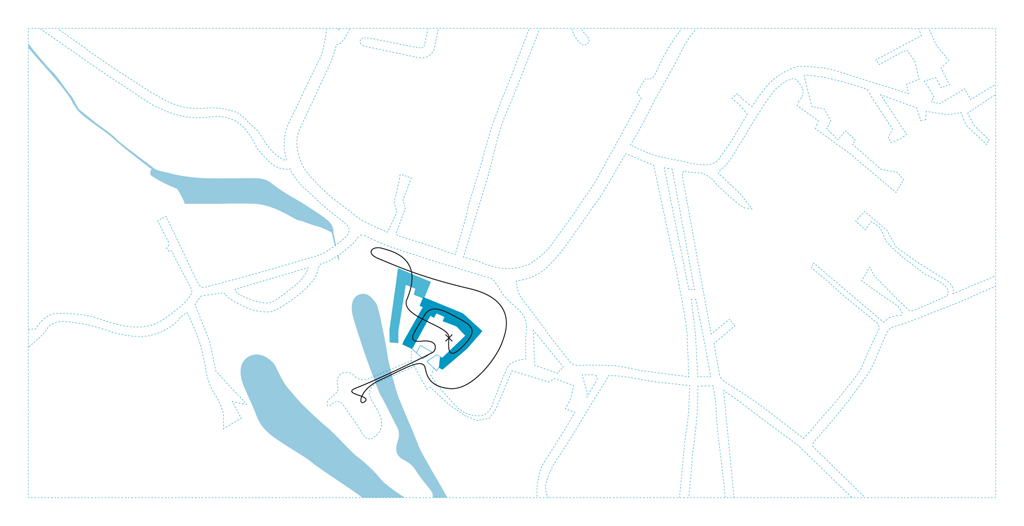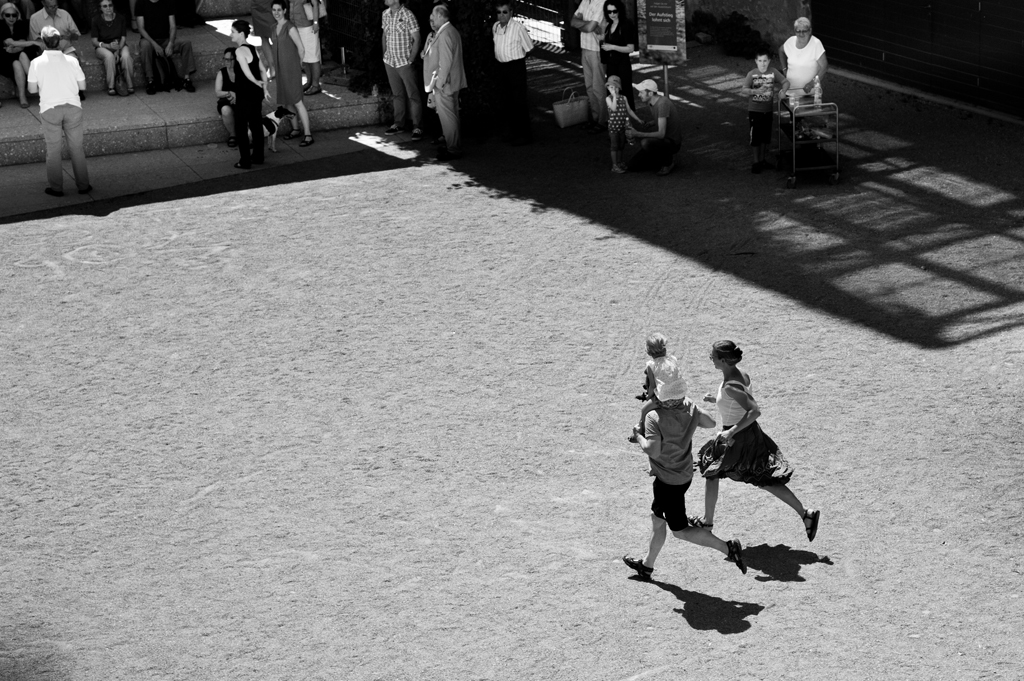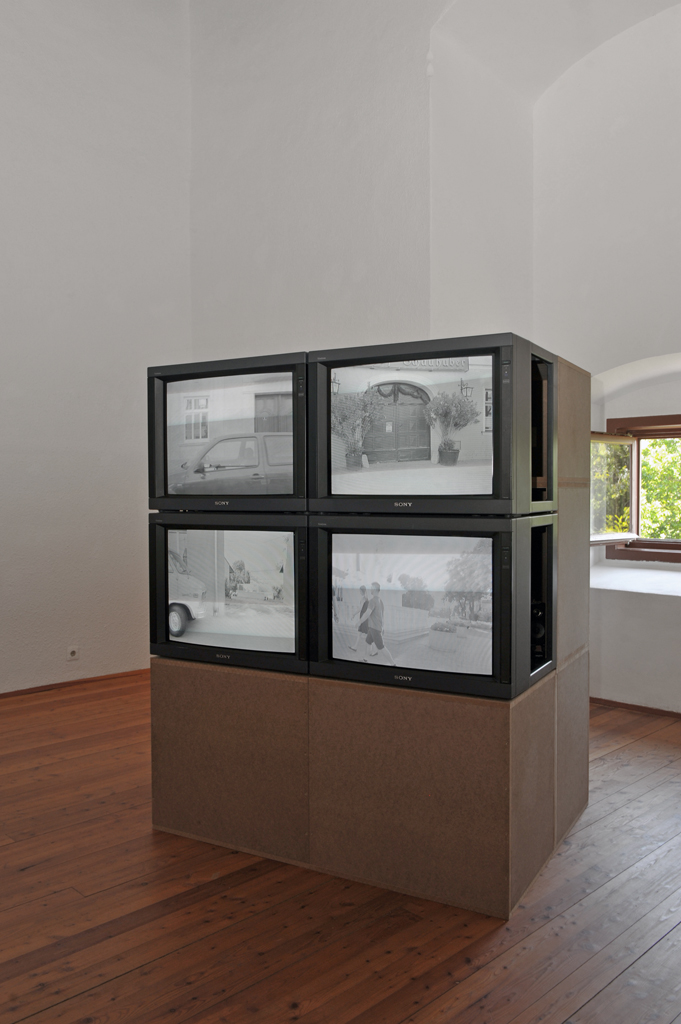Run through...
museumORTH, Orth an der Donau
06.07. – 01.11.2015
Curated by: Hilde Fuchs - part of the series Alltagskultur und Gegenwartskunst
Introduction: Hemma Schmutz
Intervention Run Through...: July 5, 2015, 2 pm
Shuttlebus from Vienna to museumORTH

--
Photo documentation of the art happening
Run Through...
by Michael Kofler(parallel to the opening speeches by Mayor of Orth an der Donau Johann Mayer and Federal councillor Gerhard Schödinger)



© Run Through..., Fotos: Michael Kofler
--
Run through...
Hemma Schmutz
Run through ..., Annja Krautgasser’s social intervention for Orth and the museumOrth, is a re-enactment of a famous historical film scene by local protagonists. In Jean-Luc Godard’s film Bande à part| (Band of Outsiders, 1964), the three main characters race through the Louvre, breaking the record for the fastest tour of the museum. Krautgasser uses this metaphor for youthful exuberance and liberation from convention to activate an entire town.
The ephemeral and light-footed gesture is detached from its context and becomes an act of exuberance, euphoria and a promise of freedom. The collective public space that is often marked by regulations, prohibitions and commercialization becomes the setting of a film shooting and a happening with the participation of the local population. Krautgasser makes reference to the collective cultural memory (museum, history of film) and at the same time creates a new space-time portrait of the location.

© Run Through..., Photos: Michael Kofler
The work consists of the following elements: the act of running, the re-enactment, the participation of the local population and the conversion or processing into the artist’s video installation. The straightforward gestures of artists who since the 1960s have been testing out various physical acts in public spaces or studios have become icons of contemporary art thanks to their simplicity and radicality. Under the premise of the dematerialization of the artwork and the desire to bring art and everyday life closer together, artists like Vito Acconci, VALIE EXPORT, Bruce Nauman, Adrian Piper and Peter Weibel utilize simple physical acts like walking, lying, running, etc. as part of their artistic practice. Yet what happens when a town starts running instead of walking? Is help urgently needed somewhere? Is it contagious? Is something on sale? Running through – something moves through a space, turning it liquid, rendering it permeable, piercing the boundary between inside and outside.
In the directions she gives to the three young persons and the population of Orth, Krautgasser makes reference to the historical film scene in which the characters – an elusive gang clearly having fun – do not piously amble through the hallowed halls of the Louvre, but rather race frivolously through the museum. The original scene is shown in the exhibition space as a reference, as are drawings of the sequence of movements through the town of Orth.
The re-enactment of historical or artistic events is a popular method in everyday culture but also in various artistic projects of the last few decades. The motive is always to allow an event to be relived, which works best when that event is re-enacted and thus made accessible to the individual’s direct sphere of experience. In Krautgasser’s case it is this trespassing of societal rules that provides order and structure to the behavior in various public and private spaces and that is addressed to a specific societal group that has always been identified with revolt – youth. Participation is a necessity of large and small political structures and an artistic ideal of the last few decades, but it is also fraught with open questions. Who controls this participation, who is called to participate, who responds to this call?


© Exhibition view: video installation
Photos: Wolfgang Wössner
In the exhibition space, the artist presents the video on four monitors placed next to or on top of one another. The dynamic of the action is reinforced by the staggered play-back of the black and white video loop by 40 seconds, which allows different passages of the video to be experienced simultaneously. The scenes thus also run through the sculpture, rendering the block more dynamic and fluid and translating the motive of the action into a materialized form of the space-time portrait of Orth.

© Exhibition view: Laufskizze 1-3, ballpen on paper
Photos: Wolfgang Wössner
Original Louvre-run-scene from Bande à part:
("Die Außenseiterbande", J.L. Godard, 1964)
www.youtube-nocookie.com/watch?v=-z74tb51YI8

DeutschEnglish